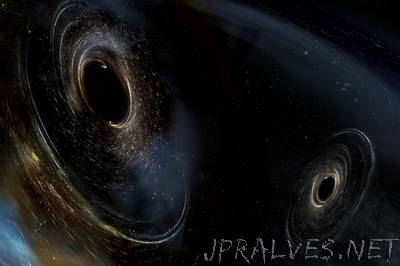
“The collision of a pair of colossal, stellar-mass black holes has made itself heard, nearly 3 billion light years away, through a cosmic microphone on Earth. On Jan. 4, the Laser Interferometry Gravitational-wave Observatory (LIGO) picked up a barely perceptible signal that scientists quickly determined to be a gravitational wave — a ripple of energy passing through the curvature of spacetime. The event, published today in Physical Review Letters, marks the third direct detection of a gravitational wave. Catalogued as GW170104, the signal, when translated into the audio band, resembles an upward-sweeping chirp, characteristic of a “binary coalescence,” or a merging of two massive astrophysical objects in the distant universe. The team has concluded that the gravitational wave was produced by the collision of two heavy, stellar–mass black holes, one estimated to be about 31 times, and the other 19 times, as massive as the sun. The signal captured by LIGO lasts less than two-tenths of a second, and in that fraction of a moment, scientists calculate that the black holes whirled around each other about six times before merging into one giant, 49-solar-mass black hole. This cosmic collision gave off an enormous amount of energy in the form of gravitational waves, equivalent to two times the mass of the sun. The merger took place about 3 billion light years from Earth, measuring about twice as far as the black hole collision that produced GW150914, LIGO’s first-ever gravitational wave detection.”
